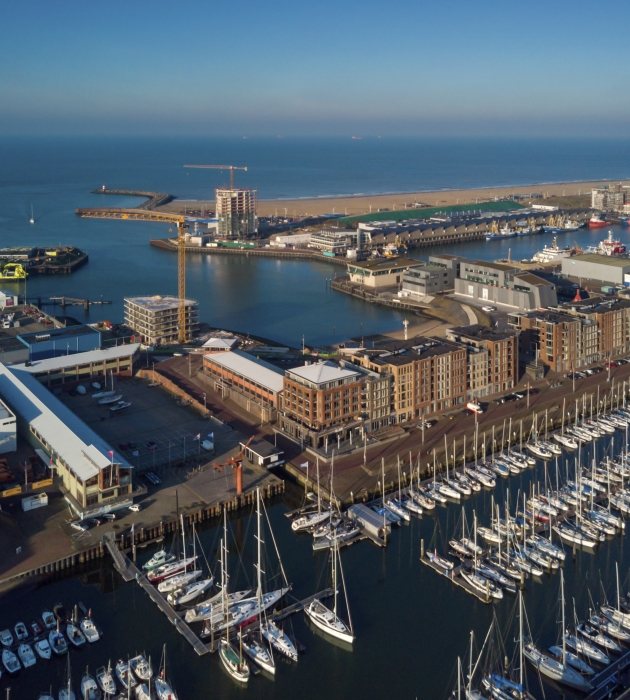
There are many contenders in the renewable energy space, however wind and solar power compete for the most attention and the biggest investments. Biomass and geothermal energy get a share of the spotlight now and again, but marine energy is rarely highlighted. Just 3 years ago, it was being described as the “Cinderella” of the renewable energy sector. Admittedly, the article mentioned here was focused on the lack of interest in tidal power, while ocean thermal energy conversion (OTEC) was still being pursued, but this is perplexing when you consider that 71% of the earth’s surface is covered by oceans.
Why a Cinderella?
There are a few obstacles to deriving marine energy solutions, which have contributed to it lagging behind other renewables. For a start, the infrastructure must be extremely rugged to withstand extreme weather conditions and the corrosive saline environment. As a result, operating expenses are high because of the maintenance requirements, and capital expenses are also considerable, because the sector is relatively untested and economies of scale have yet to be realised. There are environmental constraints too, as the plant must be located close to the consumers of its energy, such as coastal towns and cities, but must not interfere with shipping and fishing, while at the same time the site location must take environmental and biodiversity impacts into consideration.
For those who are prepared to make the investment, the benefits outweigh the risks, as marine power is consistent, reliable and predictable, unlike wind and solar energy, and there is a range of technologies that can be adopted to best fit the geolocation, which can be floating, partially submerged or subsurface. There is also the opportunity to piggyback on technology developed for offshore oil, gas and wind, but with better optimization; for instance, the density of water allows for much smaller and more compact turbines than are required for wind power.
Major institutions with energy portfolios have put the spotlight on marine energy innovation. The US Department of Energy estimates that the total potential marine energy capacity is 2,300 TWh/yr, while Ocean Energy Europe is working towards 10% of Europe’s energy requirements being obtained from ocean energy, and a potential 400,000 new jobs. Renewables agency IRENA is motivating for 10GW of ocean energy to be installed by 2030 globally.
Mitigating Climate Risk
It has been recognised that the effects of climate change are already having a devastating impact on coastal populations in general and island states in particular. It was recently estimated that globally, one billion people live on land less than 10 meters above the high level tide zone, 65 million of them on small islands. In addition, with the exception of oil-rich Trinidad, many small islands are unable to generate electricity from their own resources and rely on imports, mainly of fossil fuels.
Such islands have a dual imperative: to reduce their carbon footprint and to make a transition to renewable energy, becoming self-reliant in the process. Which renewable options are available are dependent on the location and geophysical properties of the country. For some island nations, such as the Philippines and Indonesia, who have the dubious distinction of being located along the “Ring of Fire”, geothermal energy is an inexhaustible renewable resource, which can form part of the mix. Solar energy is a good option for temperate and tropical zones, while wind could also be a possibility, however, small surface areas can limit the ability to erect onshore wind and solar farms. This is where energy from water becomes so attractive.
In 1992, a group of island states, the SIDS (Small Island Developing States) formed a coalition to build resilience against climate change. This was followed in 2014 by the establishment of the SIDS Lighthouses Initiative, which is co-ordinated by IRENA and is focused on building energy security among its members. One of their focus groups, under the aegis of Tonga, is exploring the possibilities of marine energy.
The Possibilities of Marine Energy
While the ebb and flow of tides, waves and currents are all obvious sources of energy that can be harvested from the ocean, there are other options, capitalizing on the salinity of seawater and the thermal differences between surface water and ocean depths. The technologies for these different approaches have varying levels of adoption and maturity, but all of them have a potential for reliable and predictable energy.
Tide Power - Tides are very predictable and consistent, they change every 6 hours, 4 times a day. This contrasts with relatively unreliable wind and solar power, which require complex forecasting and management. Turbines are normally used that are placed on the seabed and change direction with the tide ebb and flow, providing consistent power to adjacent towns and cities, and opportunity for the Netherlands and its many ports.
Wave Power - There is immense energy potential in waves, in fact, more than enough to satisfy the total global demand. There are several technology approaches applied that trap the wave energy which is fed into a turbine which converts it into electricity, such as the Perth Wave Power Project and the Texel Pilot in North Holland.
Salinity - Where freshwater meets saline, i.e. at a river mouth, the differential in salinity (the salinity gradient) can be used to generate electricity. The most successful technology currently is RED (Reverse ElectroDialysis). A working example is at the Afsluitdijk, which separates the freshwater of the Ijsselsmeer from the North Sea in the Netherlands.
OTEC - Ocean thermal energy conversion takes advantage of the difference in temperature between the warm ocean surface and the cold water at depth to generate energy.
SWAC - seawater air conditioning is similar to OTEC, using cold water from ocean (or a lake’s) depths to act as air conditioning to cool a building via heat exchange.
Taming the Waves at The Hague
It is surprising that the Netherlands has been tentative about ocean energy until recently, concentrating on other renewable sources, especially wind and solar, but also developing geothermal energy sites. This changed in 2019, when a position paper, “Energie uit Water”, recommending that the Netherlands should work towards becoming a world leader in marine energy, was accepted by the Dutch Minister of Economic Affairs and Climate. The need to draft a roadmap to 2030 and 2050 was proposed and accepted. One of the key factors in revisiting the potential of marine power was the recent decision that biomass should not be part of Holland’s energy mix going forward, and an alternate green energy source needed to be substituted.
The position paper was a collaboration between DMEC (Dutch Marine Energy Centre) and EWA (the Dutch Energy from Water Association - a group with common ocean energy interests). The fact that DMEC is based in The Hague, combined with the nearby presence of TU Delft, which has implemented an Ocean Energy Platform, as well as running comprehensive courses on ocean energy engineering, under the auspices of the Delft Energy Initiative, makes The Hague a natural home for innovators in ocean energy. Both ImpactCity, The Hague’s innovation hub, and nearby YES!Delft, welcome all those who are invested in improving the renewable energy sector, who will find The Hague an accommodating place to work and stay.

